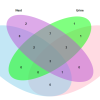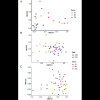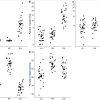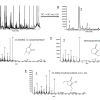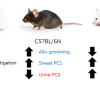Description
Excessive home cage aggression often results in severe injury and subsequent premature euthanasia of male laboratory mice. Aggression can be reduced by transferring used nesting material during cage cleaning, which is thought to contain aggression appeasing odors from the plantar sweat glands. However, neither the composition of plantar sweat nor the deposits on used nesting material have been evaluated. The aims of this study were to (1) identify and quantify volatile compounds deposited in the nest site and (2) determine if nest and sweat compounds correlate with social behavior. Home cage aggression and affiliative behavior were evaluated in 3 strains: SJL, C57BL/6N, and A/J. Individual social rank was assessed via the tube test, because ranking may influence compound levels. Sweat and urine from the dominant and subordinate mouse in each cage, plus cage level nest samples were analyzed for volatile compound content using gas chromatography-mass spectrometry. Behavior data and odors from the nest, sweat, and urine were statistically analyzed with separate principal component analyses (PCA). Significant components, from each sample analysis, and strain were run in mixed models to test if odors were associated with behavior. Aggressive and affiliative behaviors were primarily impacted by strain. However, compound PCs were also impacted by strain, showing that strain accounts for any relationship between odors and behavior. C57BL/6N cages displayed the most allo-grooming behavior and had high scores on sweat PC1. SJL cages displayed the most aggression, with high scores on urine PC2 and low scores on nest PC1. These data show that certain compounds in nesting material, urine, and sweat display strain specific patterns which match strain specific behavior patterns. These results provide preliminary information about the connection between home cage compounds and behavior. Salient compounds will be candidates for future controlled studies to determine their direct effect on mouse social behavior.
Cite this work
Researchers should cite this work as follows:
- Barabas, A.; Soini, H.; Novotny, M.; Williams, D.; Desmond, J.; Lucas, J.; Erasmus, M.; Cheng, H. W.; Gaskill, B. (2022). Compounds from plantar foot sweat, nesting material, and urine show strain patterns associated with agonistic and affiliative behaviors in group housed male mice, Mus musculus. Purdue University Research Repository. doi:10.4231/EK65-7R65
